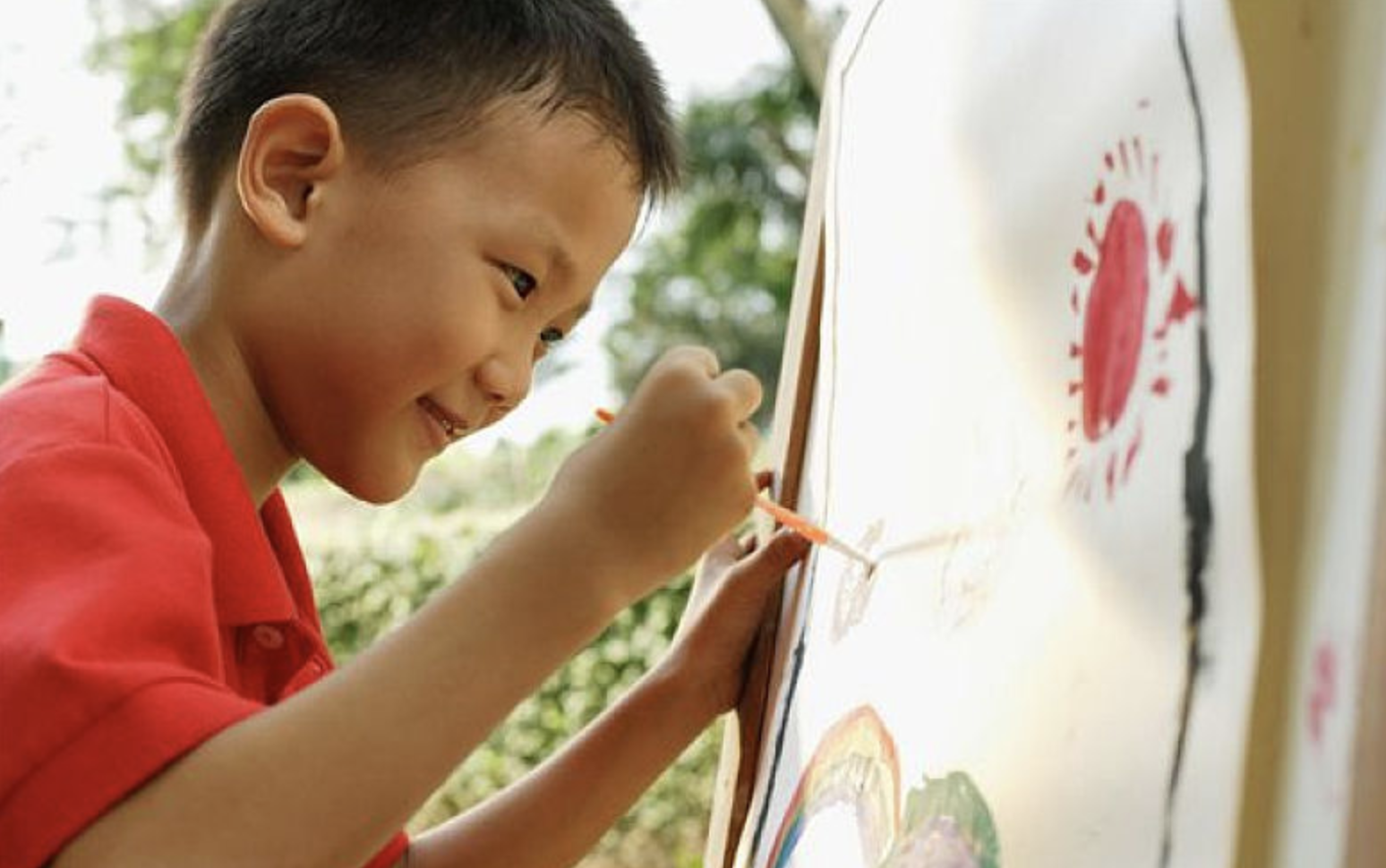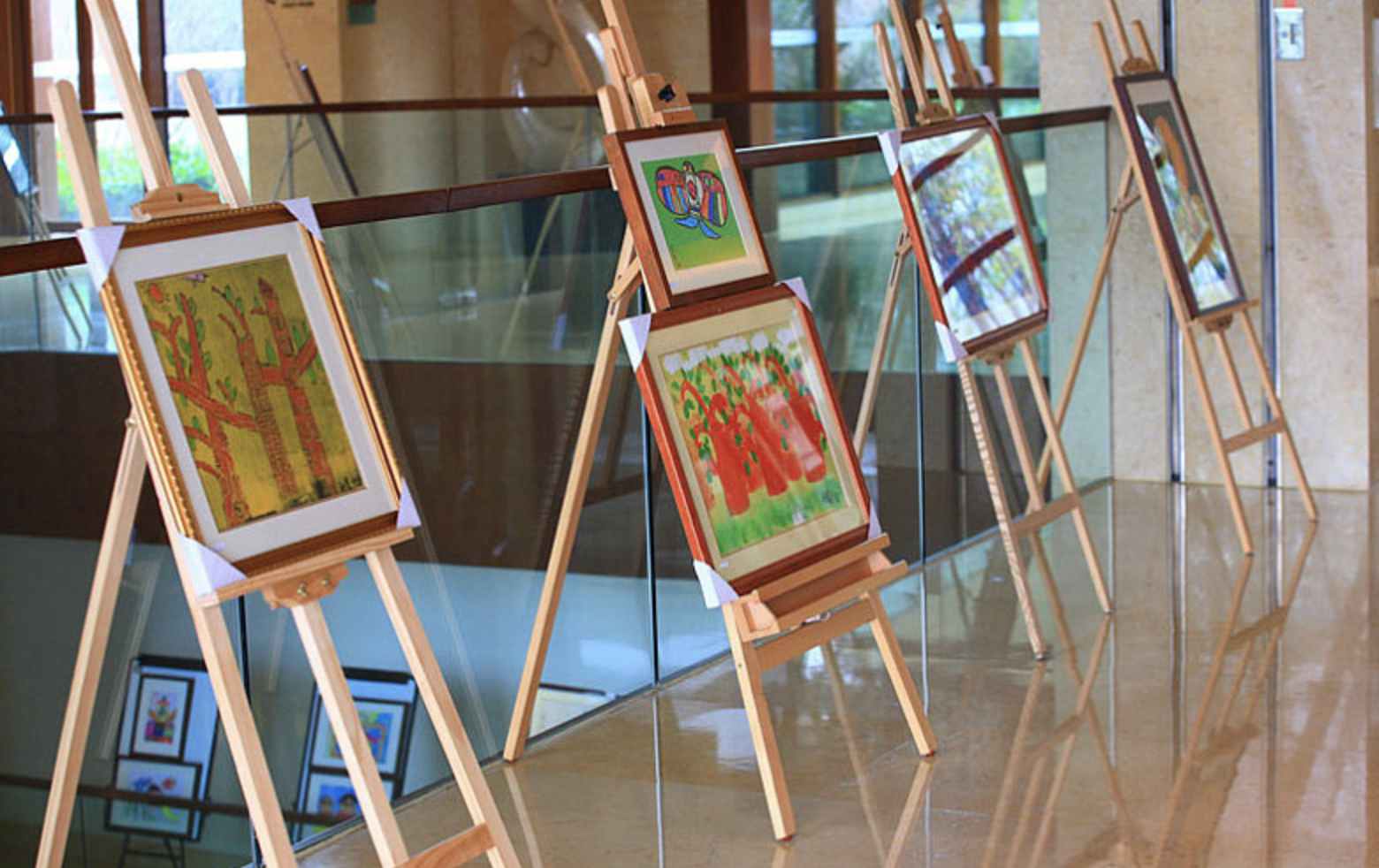
Personally, art is really not my thing. I’ve done so poorly in it in school that my teacher told me to give it up.
Nevertheless, art is not just a hobby, but can also be the trigger to one’s creativity. Studies has shown that children can benefit a lot from doing art especially if it is introduced to them at a very young age.
I think as parents in Singapore, we rarely ask our children what they did for art class. We have a tendency to just ask them about their homework which are usually focused around their main subjects.
The only time we are actively focused on our child’s art lessons is when he brings home a small art project or was tasked to draw his family.
Don’t you want to find out more about what your child is learning from art lessons in school and why it is beneficial for them?
Why we need art lessons in school
Art lessons enable students to get the life skills, knowledge, and values that they need to understand the world around them. They will be more informed about things they observe which can help them a lot in the future. These skills are developed through four major components of art lessons which are artistic processes, context, visual qualities, and composition.
Art also teaches children three major concepts as they explore the subject:
-
Art tells us the story of the world
History would be a difficult subject to study if there were no references from past historical artefacts. These artefacts reflect several key events in history that one cannot easily imagine with just a text.
Thanks to art, students will be able to grasp a picture of what the world looked like in the past. They will also have a better understanding of the culture and way of life of their ancestors. These art lessons will help them express their ideas better and build a new bond towards their country and the world in general.
-
Art helps us see new perspectives
Art is a great medium to show people various ideas and stories with the help of colours, shapes, texture, and lines. It gives people alternative ways to see and think about the world.
Students will be able to experiment with various art mediums and techniques to uniquely convey their thoughts as this will give them the chance to show their ideas and even change the perception of the people around them.
-
Art influences life
Contrary to popular opinion, being artistic and utilising visual elements do play a key role in our lives. Everywhere we turn, there are images around us because all the things that are built were first drawn to have a clear vision of the ideas.
As a result, art influences how we understand everything we see around us. Students can also become critical thinkers and use art to express themselves when words do not suffice.

Learning Domains, Key Competencies and Learning Outcomes
Art lessons use three key learning domains to help students develop three core competencies: observe-inquire, connect-response, and create-innovate. These core competencies are developed through learning outcomes in key stages in a 2-year period and are influenced by students’ artistic and cognitive growth.
Students are also taught about the development of the 21st Century Competencies during their primary school years. These competencies are as follows:
- Communication, Collaboration, and Information Skills
- Critical and Inventive Thinking
- Civil Literacy, Global Awareness, and Cross-Cultural Skills
Learning Outcomes Primary 1-2
- Determine visual characteristics in the world around them
- Be able to ask questions regarding their observations
- Create images from observations and imagination
- Play with various mediums and tools to make art
- Use art to share feelings, imagination, and thoughts
- Develop art appreciation
- Express feelings and experiences to others through art
Learning Outcomes Primary 3-4
- Determine the visual qualities in the things they see
- Ask the right questions and get factual information to understand what they observe
- Draw the things they see and experience
- Find other ways to use art materials to make new art on their own or with other people
- Use art to present ideas and be inspired in the ideas of others about their artwork
- Become eager to learn more about art
- Share visual creations and art methods with their peers
- Speak about Singaporean and international art pieces and artists
Learning Outcomes Primary 5-6
- Learn about the relationship between visual intentions and qualities
- Draw after looking at the visuals around them to immortalise ideas with art
- Find new ways to use other materials and tools to make art
- Discuss their thought process and interpret the works of others
- Be proud of their art
- Respect other’s work and their thought processes
- Discuss Singapore’s and the international art scene with their own experiences.

How Students are assessed using Criteria by Key Stages
Students are assessed through the help of their art portfolio and it will be graded based on key factors listed below. It is important to take note that every school varies on how these portfolios are graded. Some schools may look into all the works done by the student for the year while others only check the key pieces and reflections.
Personal Response
Primary 1-2
- Artwork ideas must reflect imaginative thinking
- The art should show the student’s opinion about other people’s works
- The vocabulary used must showcase what the students observe
- Reflective thinking should dominate in the portfolio
Primary 3-4
- Use of art to show one’s observations
- Artworks must reflect personal ideas and thoughts
- Artefacts should show the interpretation of other’s artworks
- Vocabulary is used to discuss the student’s feelings and experiences
- A portfolio should show the student’s strengths based on the criteria given
Primary 5-6
- Create an artwork that communicates clear ideas
- Art should reflect original ideas which are based on their inspirations and experiences
- Artefacts should reflect one’s interpretation of other artworks (local and international)
- Discuss experiences and ideas using visual and vocabulary as reflected from the artwork
- A portfolio should show consideration to one’s strengths and weaknesses based on the student’s understanding of the criteria provided
Use of tools and materials
Primary 1-2
- Display confidence and capability to explore and use different materials to create art independently
Primary 3-4
- Demonstrate one’s understanding of how tools and materials can be used to make art
- Display one’s initiative to work with peers with the tools and materials provided
- A portfolio should present the student’s choices for artefacts that show their skills and preferred mediums
Primary 5-6
- Be able to have a firm choice on tools and art materials to be used for their art and achieve artistic goals
- Display adaptability when experimenting to make new art independently or with other people
- Portfolios must show the student’s choices of key artefacts that reflect their skills and visual improvements
Use of visual qualities
Primary 3-4
- Show competency in using art principles and elements to make art for certain types of use
Primary 5-6
- Master effectively the art elements and design principles to create specific art, goals, and audience
Response to cultural and historical heritage
Primary 3-4
- Identify local artworks and influences
- Use both verbal and visual responses to understand art in a local context
Primary 5-6
- Demonstrate using verbal and visual response the connection between subjects in local and international works and their own experiences
Conclusion
Art should not be considered a simple subject and an easy pass for students as it is much more complex and challenging. Its importance and the way art lessons assesses students could be beneficial to them in the long run. As parents, you should enable your children to explore their interest and encourage them to study art as it is considered one of the subjects taken during O levels. Remember that learning art could be fundamental in developing both creative and critical thinking of your children.
If you like your child to explore their talents in other areas, check out these classes:
Top 10 Music Classes for Kids in Singapore
Guide to Music & Art Elective Programmes in Secondary Schools
